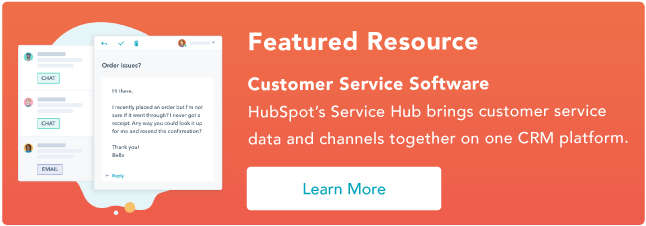Imagine a cluttered closet overflowing with forgotten gym memberships, half-finished DIY projects, and socks that never find their match.
Each year, the average company spends about $135,000 on unnecessary software licenses.
And, that's not shocking. Think of a support team using one tool to track sales, another for onboarding, and yet another for long-term account management. Each tool has its own price, quirks, and learning curve – but they might not connect well together.
This disconnection doesn't cause just minor hiccups; it costs time, money, and your ability to create seamless customer experiences.
But, just as you'd tidy up any messy space, you can declutter your digital toolbox. By simplifying and organizing your customer success tools, you can sail through challenges, increase customer stickiness, and deliver top-notch experiences in the business world.
7 Signs of Tool Sprawl
1. Switching tools takes too much time.
If your team spends more time jumping between tools than actually talking to customers and building relationships, that's a sign of tool sprawl. It means your onboarding and implementation team is not as efficient as it could be, and that the tools aren't helping you save valuable time which could be used better when aiming to generate revenue or business impact.
2. Data doesn't match up.
Some tools, like analytics software or KPI trackers, might track performance or metrics differently, or implement better with other data-gathering tools. Because of this, you might find that data from tool to tool could be different, or that your company needs to pick one as a "source of truth."
Ultimately, with too many tools, customer information can end up scattered, inconsistent, and messy, making it harder to see the full picture of how your CX is performing, what your customers need, or how health scores are shaping up.
3. Teams aren't communicating.
If different parts of your business are using different tools that don't work together, it can lead to problems like siloes, miscommunication, or under communication.
This can lead to a bumpy, disjointed customer experience that makes clients feel like they need to have the same conversation with multiple departments to get a good resolution.
In reality, your tech stack should ensure that the information customers give in the sales process follows them to onboarding and implementation teams without repetition.
4. New team members struggle.
When new team members need hours of tool training or have a hard time learning all of your tech, the whole team could struggle as a result.
Ultimately, this time could cost you if those new employees aren't able to help customers as quickly and effectively as new hires at competing, better-connected companies.
5. No one can see the whole picture.
If you can't get a clear idea of what your customers are doing because your tools don't talk to each other, that’s a clear sign of tool sprawl.
Not only should you focus on streamlining your tools, but you also need to ensure that the tools you do use integrate well into your tech stack.
6. Tool costs keep adding up.
Every tool costs money. If you're paying for a lot of tools that do similar things, it's a waste of money and reduces each tool's level of ROI.
Take note of how much you’re spending on tools. If the tech stack doesn’t help you speed up onboarding, improve other processes, and/or reduce the customer’s initial time to value, you might be improperly investing in tech.
7. Growth stalls.
While too many tools cut into your budget, they also cut into your team's overall level of time, bandwidth, and efficiency. When you're overwhelmed by tools and tech problems, it can also make it hard to give your customers the attention needed to retain or upgrade them. Ultimately, all of these factors could slow down your overall revenue and business growth.
Navigating the Customer Journey & Tools for Every Stage
Your customer experiences four distinct phases during their customer journey: Pre-purchase, purchase, onboarding, and customer success/retention.
At each step, having the right tools in your tech stack can make all the difference in creating exceptional experiences.
1. Pre-Sale: The Exploration Phase
To capture customers beginning to explore the products related to their field or industry, you'll want to harness tools that align lead generation, content management, and engagement.
For example, customer Relationship Management (CRM) systems like HubSpot keep track of potential leads, while marketing automation tools like Marketing Hub help nurture these leads with tailored content. The more your customer understands about your business or service before purchasing, the more likely they’ll be to move through the sales process quickly and stick with you long-term.
|
Sample Tools for the Exploration Phase |
||
|
Tool |
Type |
Benefit |
|
Customer Relationship Management |
All the software, integrations, and resources you need to connect marketing, sales, content management, and customer service. |
|
|
Marketing automation, content management, and email marketing |
An easy-to-use, all-in-one marketing, automation, and email marketing platform. |
|
2. Purchase: The Decision Phase
To align with customers ready to make a purchase, you can leverage e-commerce platforms like HubSpot Payments, Shopify, or WooCommerce to provide seamless online purchasing experiences.
Payment gateways ensure secure transactions, while live chat tools such as Intercom or Zendesk Chat offer real-time assistance, reducing friction and boosting conversion rates.
|
Sample Tools for the Decision Phase |
||
|
Tool |
Type |
Benefit |
|
Online Payments |
Accept online payments on your site, landing pages, and via other inbound content. |
|
|
E-commerce |
Easily sell products online, offline, and everywhere in between. |
|
|
Open-source e-commerce plugin for WordPress sites |
Quickly launch well-designed online stores. |
|
|
Automated and human customer service chat |
Get all your automation, conversations, tickets, customer data, and reporting working together. |
|
|
Messaging and live chat |
Chat with customers wherever they are. |
|
3. Customer Onboarding: The Welcome Phase
Purpose-built customer onboarding tools like GUIDEcx take your new customers through quick and seamless onboarding that can drive revenue and customer loyalty.
The right customer onboarding software can even anticipate common questions and address potential stumbling blocks, setting a positive tone from the outset.
Additionally, if your onboarding platform integrates with your existing CRM, you can automatically begin onboarding (while still keeping your sales teams informed) when deals are marked “closed won."
With many onboarding tools, your team can also connect an internal task manager like Asana ti motivate and delight new customer teams. By providing both a welcoming and hassle-free introduction, you increase the likelihood of a satisfied and engaged customer.
|
Sample Tools for the Welcome Phase |
||
|
Tool |
Type |
Benefit |
|
Customer onboarding |
Easily engage customers, third parties, vendors, and key stakeholders during onboarding without paying for additional licenses |
|
|
Work management |
Track and manage internal customer onboarding and implementation tasks between teams |
|
4. Customer Success & Retention: The Relationship Phase
In the final stage of the buyer's journey, businesses should aim to turn customers into loyal advocates. This is precisely where robust customer success and retention tools, including HubSpot Service Hub and Gainsight, come into play.
While HubSpot and Gainsight are two comprehensive platforms that allow companies to proactively manage customer relationships, ensuring satisfaction, growth, and long-term loyalty, helpdesk software like Zendesk ensures prompt customer support.
Additionally, customer feedback tools like SurveyMonkey or Qualtrics provide valuable insights for continuous improvements based on customer preferences and opinions.
|
Sample Tools for the Relationship Phase |
||
|
Tool |
Type |
Benefit |
|
A suite of tools and features for success and service professionals |
Centralize all customer CRM data, quickly identify opportunities, and demonstrate how your CS team’s activities translate into customer impact. |
|
|
Customer success and product experience |
Centralize all customer data, quickly identify risks and opportunities, and demonstrate how your CS team’s activities translate into customer impact. |
|
|
Survey and experience management |
Demonstrate care by listening to customers and gain customer satisfaction insights. |
|
|
Survey and experience management |
Monitor and improve moments along the customer journey and uncover areas of opportunity to drive critical organizational outcomes. |
|
6 Strategies To Fix Tool Sprawl
One of the biggest challenges of tool sprawl is the disjointed communication it creates between the teams that manage each stage of the customer journey. But tackling the tangle of tools in customer success and experience doesn't have to be daunting.
By implementing the strategies below, you're not just decluttering your tool landscape. You're also enhancing the effectiveness of your customer success and experience efforts.
The result? A well-organized toolbox that empowers your team to deliver exceptional customer interactions and create lasting relationships.
1. Assess (and trim down) your tech stack.
Take a close look at the array of tools you're using. Identify which tools are truly essential for your customer success journey and which might be redundant.
Aim to keep the tools that offer unique value and contribute directly to your objectives. This helps avoid confusion and declutters your toolkit.
Take time to make a list of all the current tools and the key features that your team uses. If you spot duplicate functionality or a tool is particularly hard to use, eliminate something. Work closely with your team to identify the pain points and use that to guide your decision.
2. Prioritize and invest in tools that integrate well together.
Consider tools that can seamlessly integrate with each other. When tools can talk to one another, data flows smoothly across departments, reducing the risk of errors and duplication.
3. Centralize tools around one hub.
48% of teams say their top collaboration hurdle is ineffective communication between team members. Choosing a core tool or platform that acts as a central hub can be a game-changer.
This hub can unite various aspects of your customer success process, from onboarding to support. It can also streamline information flow, making it easier for teams to access and manage customer data in one place.
Picking the right customer onboarding software can address this issue by acting as a central hub that bridges the gap between sales and customer success teams.
Even better, if you’re using best-in-class onboarding software, the integrations within that system can help keep sales updated on onboarding progress while also tracking crucial metrics that tell customer success teams the customer health score right from the start of the relationship.
4. Tailor tools to team needs.
Each team within your organization has unique needs. To prevent tool redundancy, select tools that cater to specific tasks. This ensures that you're not paying for multiple tools that essentially do the same thing. Align tools with team roles to enhance their effectiveness and reduce confusion.
5. Re-assess and refine your tool roster.
Tool needs evolve over time, so it's crucial to regularly review your tool stack. Periodically assess whether each tool is still serving its purpose effectively — pay attention to contracts and renewal dates.
If a tool's usefulness has diminished, consider replacing it with a more relevant option. This ongoing evaluation keeps your tool landscape current and efficient and keeps your teams.
6. Seek expert insights or professional guidance.
Sometimes, expert advice can make a world of difference. Consultants and professionals experienced in customer success tools can offer valuable insights. They can help you identify gaps in your tool stack, recommend solutions, and guide you toward a streamlined approach tailored to your business needs.
Declutter Your Tool Box for Lasting Customer Success
By implementing strategic solutions, you can create a harmonious ecosystem where tools work cohesively, and teams collaborate seamlessly.
With these strategies in place, you're not just decluttering your tool landscape; you're building a foundation for lasting success. A well-organized toolbox empowers your team to craft exceptional customer experiences, foster loyalty, and drive sustainable growth.
Customer Experience
.png?width=112&height=112&name=Image%20Hackathon%20%E2%80%93%20Vertical%20(67).png)





![Is The Customer Always Right? [What It Means + Why It Matters]](https://53.fs1.hubspotusercontent-na1.net/hubfs/53/customer-is-always-right-origin-1-20250202-6448090.webp)





